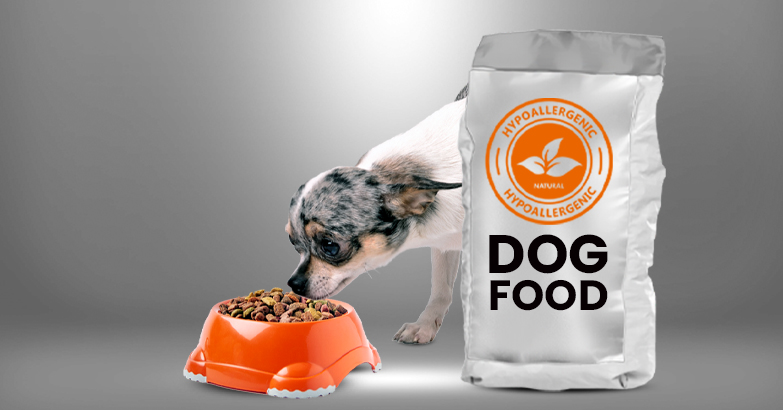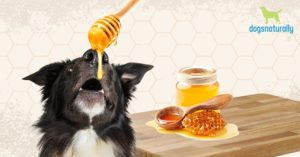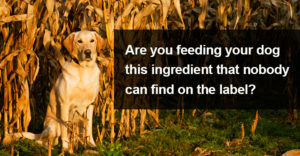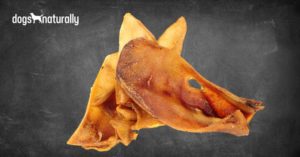We are deeply saddened by the death of DNM friend, partner and contributor, Marion (Meg) Smart DVM PhD, on September 1st, 2023.
Dr Smart wrote the article below for the print edition of Dogs Naturally Magazine.
The scientific community is just beginning to appreciate the unique, complex and intimate relationship that exists between the immune, endocrine and digestive systems. Central to this relationship are the healthy protective layers of microbial organisms (microbiomes) covering the external and internal surfaces of our body.
These microorganisms are the first to be exposed and react to numerous outside influences both in a negative and positive way. This relationship is very complex evolving over millions of years and is considered to be “an ancient code for survival in all living organisms.”
If this microbial barrier does not form properly or is disrupted, the body’s first line of defense is compromised, as are the lines of communication among the gastrointestinal tract (GIT), the immune and the endocrine systems.
This can result in a number of skin and gastrointestinal manifestations, which include food allergies and intolerances. In the case of food allergies, normal communication is disrupted and the immune system through immunoglobulin E (IgE) responds to the dietary protein as if it is foreign, triggering a histamine release and inflammation.
Genetics, antimicrobial or corticosteroid use, adverse reaction to vaccines, intesti- nal viral, parasitic or bacterial infections, dietary changes and environmental stress (over-stimulation of the adrenal glands and corticosteroid release) have all been implicated in potentially initiating this inflammatory response.
An adverse food reaction in veterinary medicine refers to an aberrant reaction to food or additives, since the true pathogenesis is often very difficult to determine.
RELATED: Common types of dog allergies …
Hypoallergenic Diets For Dogs
Hypoallergenic veterinary diets are sold through veterinarians. The FDA has recently recognized that the rather lenient regulations defining veterinary diets need to be changed. How this will be accomplished and regulated will beinteresting. Never to be held accountable, the FDA admits in their Compliance Policy Guidance document that “Animal health may suffer when dog and cat food diets intended to treat or prevent disease, but which are not approved as new animal drugs, are fed to pets.
“These products have not been evaluated by FDA for safety, efficacy, or nutritional adequacy.” In other words, the FDA states that pet foods that are allowed to claim they treat or cure disease have not been tested to assure consumers the product can actually treat or cure any disease and – the worst – the agency states they might not actually be safe.
In an interesting (and serious) twist, the FDA places the responsibility of safety of these prescription pet foods on veterinarians. Compliance Policy Guidance states:
“Because these products have not been evaluated for safety and efficacy, veterinary oversight is especially important to provide periodic assessment of how the animal is reacting to the diet and to discontinue the product’s use when warranted.”
Novel Protein Diets For Dogs
The first hypoallergenic diets to be developed were novel protein source diets. The most popular was lamb and rice, which sold so well that lamb meal became a rare commodity and pets started to become intolerant of lamb.
New diets are coming on the market advertised as containing a single source of a protein such as duck, kangaroo (illegal in California), alligator, catfish and salmon.
However, single protein sources are not always as “single” as they claim. It’s possible during the manufacturing of meals for other protein sources to be accidentally added when the company doesn’t clean equipment after renderings; or this can happen intentionally when the company adds ingredients like chicken meal or feather meal to increase the protein but decrease the costs.
Single protein formulas are not exclusive to veterinary diets, but also available through retail outlets.
Before using these single protein foods, dog owners should examine the claims made and ingredient lists of veterinary or over-the-counterdiets to determine if only one protein source really is present. Ask the company what they do to ensure the food contains only one single protein source; they may need to ask the manufacturer of the meal for this information.
RELATED: Why you can’t trust pet food labels …
Hydrolyzed Protein Diets For Dogs
Hydrolyzed protein diets have been formulated based on research in children with food allergies. They’re actually not new to the pet food industry as they have been used for years as flavoring and palatability enhancers. The theory behind these diets is that the size of the protein molecule is reduced to a small enough size so that it does not cause a reaction with IgE. Most veterinary diets claim to be efficacious, highly digestible and suitable for all life stages.
Most companies provide numerous testimonials from satisfied pet owners, yet they don’t disclose the details of their research on the diets.
One paper reviewing the scientific evidence of the benefits of hydrolyzed protein diets found a limited number of studies existed. Some papers indicated that hydrolysate-based commercial diets reduced but did not eliminate immunological and clinical allergenicity. Some dogs with cutaneous adverse foodreactions (CAFR) exhibited a worsening of clinical signs when fed partial hydrolysates.
What Is Hydrolyzed Protein?
There are two types of hydrolyzed protein diets. One uses animal protein sources (chicken liver), the other is plant based (soy). The carbohydrates used presently are potato, rice, cornstarch and starch (the source is not indicated).
The proteins are hydrolyzed by cooking with a dilute hydrochloric acid, cooled, then neutralized with either sodium carbonate or sodium hydroxideto a pH of five to six, then filtered.
The source of the raw material, concentration of the acid, the temperature and time of the reaction and other factors can all affect palatability. During the reaction, monosodium glutamate (MSG) is produced, which is a potential problem. The hydrolysate can also be produced using protease enzymes.
Veterinarians must measure the clinical benefit of these diets against their high cost and low risk of reduced appetence or development of gastrointestinal symptoms. Hydrolysate-containing diets are probably best used in dogs who are suspected not to be hypersensitive to hydrolysate’s individual components.
RELATED: Hydrolyzed protein as an ingredient in FortiFlora …
Hypoallergenic Diet Ingredient Lists
The ingredient lists of these diets should be looked at closely as they don’t resemble anything that we would ordinarily consider a food ingredient. But first, here are a few hints on reading the ingredient list.
- The first four or five ingredients provide the main nutrients. Any ingredient below the salt, which is usually in at 0.56 percent of the total, is provided in a premix to balance the nutrients to achieve AAFCO standards. These are usually minerals, trace minerals (possibly chelated with hydrolyzed proteins which may be large enough to initiate an allergic response), vitamins, missing essential amino acids or fatty acids.
- Diets labeled grain-free may not, in fact, be grain-free, because grains are often used in the pre-mix that the food manufacturer buys from a third party source.
- Some dehydrated vegetables and fruit (usually in small amounts) are added primarily for label appeal, but are marketed as a source of bioactive phytonutrients.
- When probiotics are added, they are sprayed on the kibble, but because they are anaerobic bacteria they cannot survive under the storage conditions of commercial kibble. Also, to remain healthy, probiotics need a source of insoluble and soluble fiber (prebiotics) in order to grow and function in the intestinal tract.
- Other ingredients like anticaking agents (sodium silico aluminate), flavors to improve palatability or antioxidants to protect the unsaturated fats from oxidation, are valuable in producing a kibble or canned food but have no nutritional value.
Once you become familiar with reading ingredient lists, you can see if the list supports the company’s claims.
Questions About Hypoallergenic Diets
I would advise anyone considering these diets to get satisfactory answers to the following questions either from their veterinarian or the company’s veterinarian or nutritionist before purchasing any of these products. If you don’t get satisfactory answers, don’t buy these foods.
Who manufactures their hydrolysate or do they buy it from a broker operating in the open world market?Distributors like Alibaba sellingredients manufactured any- where in the world. Some of these companies don’t have the same quality control checks as products manufactured in North America.
What quality control measures are in place to insure the product contains the proper size of protein peptides?
Is there any concern about the long term feeding of the hydrolyzed proteins?
Do they have any concerns about the MSG?
Do they know the level of MSG in their hydrolyzed protein?
How is ingredient digestibility determined – on an individual ingredient basis or as the manufactured dry or wet pet food?
Unfortunately, many of the answers to these questions will likely be “that is proprietary information” – which is not a satisfactory response!
You can also ask your vet these questions … but don’t expect him to know the answer!
RELATED: Dogs Naturally calls bull$shit on prescription diets …
Dubious Ingredients In Hypoallergenic Diets
I looked at the ingredient lists of the main veterinary hypoallergenic diets and I picked out some ingredients I believe are red flags that shouldmake you think twice about buying these foods.
Protein Sources
Hydrolyzed soy protein isolate and hydrolyzed chicken liver.
Fat And Oil Sources
As a pet owner you have no idea what refining processes these oils have gone through and how the fatty acid properties may have been altered.
Vegetable oil in general: ask about the source of the oil, the degree of saturation and the fatty acid composition. It’s likely most of the oils usedare poor quality and genetically modified.
Partially hydrogenated canola oil: like all modern vegetable oils, canola oil goes through the process of refining, bleaching and degumming – all of which involve heat. Because canola oil is high in omega-3 fatty acids, it can easily become rancid and must be deodorized.
The standard deodorization process removes a large portion of the omega-3 fatty acids by turning them into trans fatty acids. Question the company on the amount of trans fats in canola oil, as they are not listed on the label.
Carbohydrate Sources
There a difference between the starches.
Starch (source unknown) and cornstarch are used by the same company. This may depend on the availability of the product to the manufacturing plant. Other companies use rice and potato. All have been processed prior to inclusion in the food.
Fiber Sources
Powdered cellulose (essentially, wood pulp) is a highly processed source of fiber and is not a good choice to help re-establish a healthy gut microbiome. And beet pulp contains a combination of soluble and insoluble fiber.
RELATED: The best sources of fiber for dogs …
Trace Mineral Sources
These are often chelated with a modified protein and labeled as a proteinate; hopefully the amounts are small enough not to cause an allergic response as often the source of protein is undisclosed.
Non-Nutritional Components
TBHQ – tertiary butylhydroquinone – is an antioxidant derived from butane used to preserve foods by preventing the fats from going rancid. The FDA allows up to .02 percent of the total oils in human foods.
I’m not aware of any limitation set on pet foods. Dogs are considered to be sensitive to TBHQ but the level allowed in human foods still offers 100 times the margin of safety. Animal studies suggest there is a wide margin of safety between a toxic dose and safe dose. In the past, toxicity studies haven’t followed animals on these products over a period longer than a month, so one must question the continuous use of such products in pet foods.
Long term, high doses of TBHQ in laboratory animals have shown a tendency for them to develop cancerous precursors in their stomachs, as well as DNA damage.
Sodium silico aluminate: an anticaking ingredient.
RELATED: Preservatives in dog food …
Bottom Line: Make Your Own
Nutrition can play a major role in the management of immune mediated food allergies … but other contributing factors must also be recognized and controlled.
Dr Jean Dodds’ NutriScan saliva test (nutriscan.org) is a great way to start as the test takes away the need for a lengthy diet elimination trial.
If you make a homemade diet, you know and control what you’re feeding your dog. A farmer’s market, your own garden or a local commercial market garden can supply you with the suitable ingredients you may be looking for at a reasonable cost.
Find a small local butcher or inspected abattoir for your meat. Feed all parts like trim (discarded meat and fat trimmed off the carcass of tame or wild meat producing animals) heart, liver, kidney, trachea and lungs; even the fresh thoroughly washed parts of the gastrointestinal tract may be available.
RELATED: DIY allergy relief for dogs …












